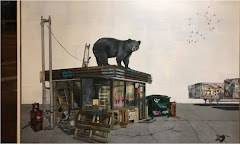I’ve been laid out with a cold for the last few days. And as usually happens when I get sick, things go badly for Canadian television.
That’s because I don’t normally watch much Canadian TV. Oh, I give every show a shot. But most don’t make the ongoing viewer cut.
That’s got nothing to do with quality, artistry or aesthetics. Some of it can be chalked up to “seen it before” or “done it”. Mostly, my weekly TV allotment seldom gets into hourly double digits. Debut new series like “True Detective” and “Black Sails”. Add the NFL playoffs, and I’m at my limit.
But when I get sick I spend more time watching TV and thus more time on Canadian channels. And I’m inevitably unsettled by that.
Despite some break-through series and all the news of chock full development slates, I’m more worried than ever about our future.
We don’t yet know what impact the massive Rogers hockey deal will have on the drama on all the channels they’ve begun setting aside to run games.
We don’t yet know if the CBC executive shake-up will mean brave new era of Cancon or more seasons of wait-and-see as they get up to speed.
Mostly, we don’t know what the fallout will be from unbundling.
And the Canadian TV I watched between sniffles and sneezes got me very concerned about that in particular.
Recently, I compared the ratings for the new seasons of “Duck Dynasty” and “Girls” searching, as every producer searches, for a hint of insight into future audience trends. It’s a mug’s game with too many moving parts to ever achieve any certainty, yet it’s one of the few yardsticks we have.
But ratings in Canada, especially on our specialty channels, aren’t anywhere near the content driver and determiner they are in the real world.
Most of the specialties rely far more on subscriber fees than sponsor payments to stay in the black. And while they all kick in cash for their own series, much of their shows’ budgets and the bulk of development is paid for via cable company contributions.
Therefore, they are far less dependent than those in a non-subsidized world on commercial revenue to survive.
But with cable subscriptions declining overall and the reality that, given the unbundling option, most viewers will unburden themselves of channels they don’t watch; one has to ask how much their profit overall will decline and therefore how the programs we make will pay for themselves.
Maybe Space, Showcase or others will just jack up their subscription rates, opt for greater product placement or make more foreign sales to keep delivering their signature shows.
Perhaps advertisers will happily pay more for a dedicated demographic than the overall penetration a particular channel now offers.
But what I noticed about current commercial breaks is that, invariably, half of what was advertised was other fare on the same network.
Good for them for keeping their audience informed. But half? Of almost every break?

Does that mean they can’t even sell ads for their shows –- or they aren’t bothering to try because they’ve got the monthly churn from the subscriber base, most of whom never tune in to anything on the channel.
For these broadcasters and our series and films to survive, we’ll need to make commercial time into a major money earner.
And that might mean using those breaks differently from the way they are used now.
After a couple of hours of repeated exposure to that horrific McDonald’s What-what-wha…? commercial, I wasn’t sure if I should blow my nose again or just blow my brains out.
Once or twice an hour, an audience might pay attention to the same commercial. But after they’ve seen it 2400 times any positive messaging has been turned into unacceptable hate speech.
On one hand, it’s audience abuse. And on the other, it encourages tuning somewhere else.
That got me wondering if 30 and 15 second commercials have run their course. Time was, one minute commercials were the norm. Then advertisers began chasing an ever shortening audience attention span. A span likely shortened by being continually bombarded by unappealing messages.
Back when I was a kid, it wasn’t unusual for an entire commercial break to be taken up by a single commercial. Somebody might take you through the entire Tide wash cycle or explain how all those fancy buttons on the dash of your new Rambler were used.
Entertaining and informative and seldom if ever repeated.
Maybe that’s what we have to do. Fill the commercial time with content as equally attractive and absorbing as the programming which surrounds it.
But who’s going to watch a commercial that long, you might ask. And who’s going to commit to that level of creativity to sell cheeseburgers or shaving cream?
Well, they do it every year when the Superbowl rolls around. And now ad agencies in other parts of the world are giving the idea a shot for less special occasions. That’s partly because they realize the “sameness” that typifies Canadian TV ads is an enemy of branding and the main reason audiences channel surf during the show breaks.
What follows is a six minute commercial for blue jeans. Ask yourself not only how many people would stick around for all of it, but how much its presence might force show makers to pick up their own game a couple of notches.
We aren’t going to be allowed to go on the way we’ve been going. The money just won’t be there. So we better start thinking outside the 15 and 30 second boxes in order to generate some.




No comments:
Post a Comment